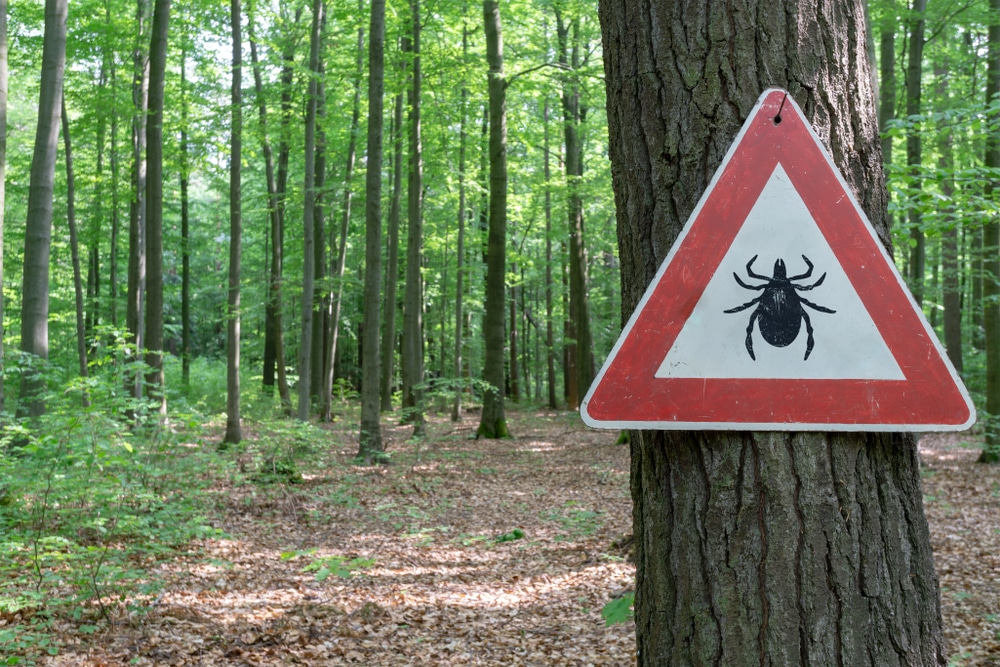Vets always talk about tick prevention as well as regular deworming. We don’t do it because we want to be annoying, though. We do it because we care about our patients, and we would rather not see you at the practice for something that you, as an owner, could have prevented. Part of that talk involves talking about tick-borne diseases. So, just what are tick-borne diseases anyway?
Tick-borne diseases are a group of diseases that have one thing in common: they are all transmitted by a tick!
How Do Dogs Get Tick-Borne Diseases?
Unfortunately, it’s quite simple for a dog to get a tick-borne disease. In this case, your dog gets bitten by a tick that carries a bacteria, virus, or parasite that causes an illness. Where I live, we used to have cold winters, which was great because ticks don’t like the cold.
But not everyone wants to live in cold weather. Even those that do want to go hiking. Unfortunately, forests have many spots where ticks like to be. So, you may be hiking with your dog, they might go investigate something and come back with a tick (which is why you should always check yourself and your dog for ticks during and after hiking).
Another way dogs get ticks is if their owner lives on a farm and doesn’t protect their livestock that goes out to pasture. In that case, they can become good hosts for ticks, and they too can become ill from tick-borne diseases. Those ticks can also transfer to your dog.
Now, when an animal is affected by a tick-borne parasite, for example, the parasite will circulate through the bloodstream for some time before it finds its place in the body and starts to multiply. In the meantime, if the same dog gets bitten by a tick that is not infected, the tick sucks infected blood. When the tick has finished feeding, they let go and fall down to the ground and stay there until they become hungry again.
What Are The Most Common Tick-Borne Diseases In Dogs?
Vets usually see these tick-borne diseases in dogs:
- Ehrlichiosis
- Anaplasmosis
- Lyme disease
- Babesiosis
- Rocky Mountain spotted fever
- Bartonellosis
- Hepatozoonosis
What Can Be Done To Protect Dogs From Tick-Borne Diseases?

Depending on the region where you live, when you visit your vet for the first time with your dog, you will most likely get a lesson regarding the most important things you need to know. One of those things will be protecting them from ectoparasites such as ticks, fleas, sand flies, as well as mosquitoes. Vets usually recommend using different products that contain a solution to put on your dog’s skin in a specific way. That means you need to respect the time when you put it on. Your dog should not have had a bath for at least three days before the application and should not receive one at least three days after the application either.
Another way you can protect your dog from tick-borne diseases is by using special collars. Nowadays, you can also find chewable tablets that have good taste and protect against ticks and other things too.
But in my opinion, the best thing you can do is to always give a thorough examination of your dog, especially if you have just come back from the forest. Because you can never be 100 percent sure that your dog didn’t bring a friend back home with it.
Conclusion
Tick-borne diseases are serious and life-threatening conditions if left untreated. However, since nothing can protect a dog 100 percent by itself, we recommend always checking your dog for ticks after situations they’re likely to get them. In addition, talking to your vet will help as well.
So, has your dog ever had a tick before? Let us know in the comments below!
